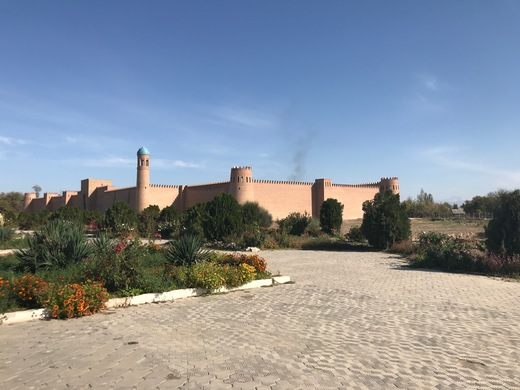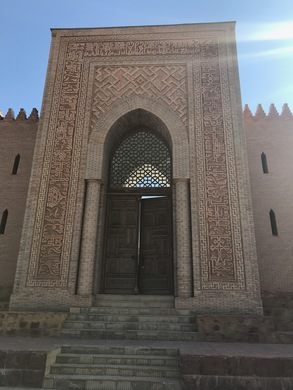From the ninth to 12th centuries, Hulbuk was one of the biggest cities in Central Asia. There, a citadel guarded the western entrance of the Pamir Highway and the nearby salt mines of Khoja Mumin.

Two palaces were built inside the citadel; the lower palace in the ninth and 10th centuries and the upper in the 11th and 12th centuries. But when the kingdom collapsed, so did the citadel. It became overrun by Mongols and Turkish tribes. In the centuries afterward, a new market town, Kulob, was founded nearby.

In the 1950s, Soviet archaeologists excavated the site. Several artifacts can be seen in the museum of antiquities in Dushanbe, as well as in the museum at the other site of the road. Wall paintings of animal-gods, swastikas, and dancers show that Hulbuk was more Zoroastrian than Islamic. Recently, the citadel walls were completely rebuilt in the Muslim style, with shiny bricks and inlaid Koran verses at the majestic entrance gate.



